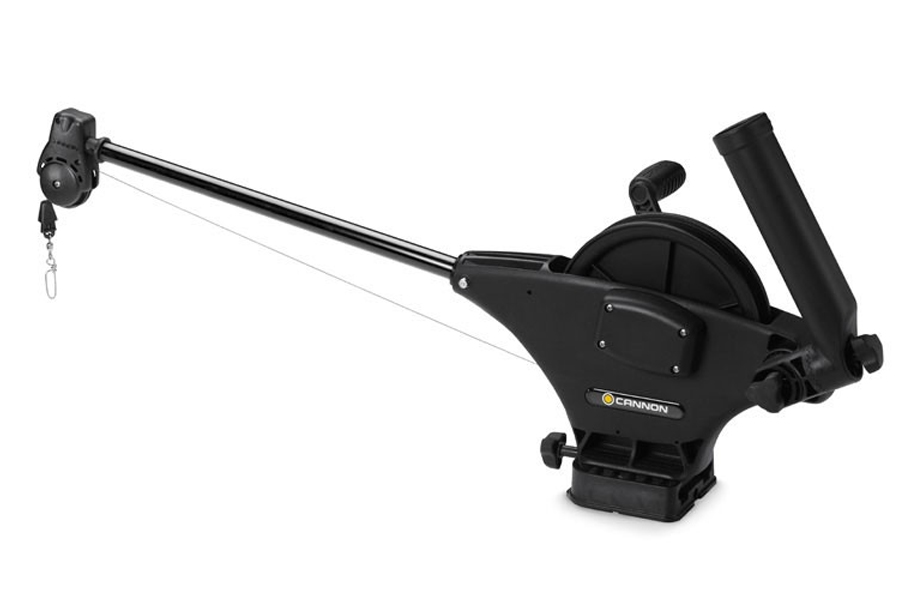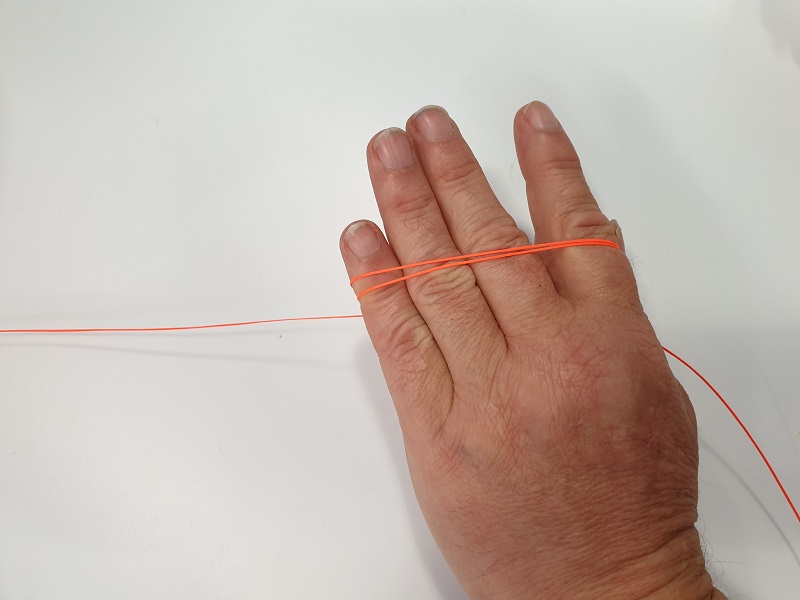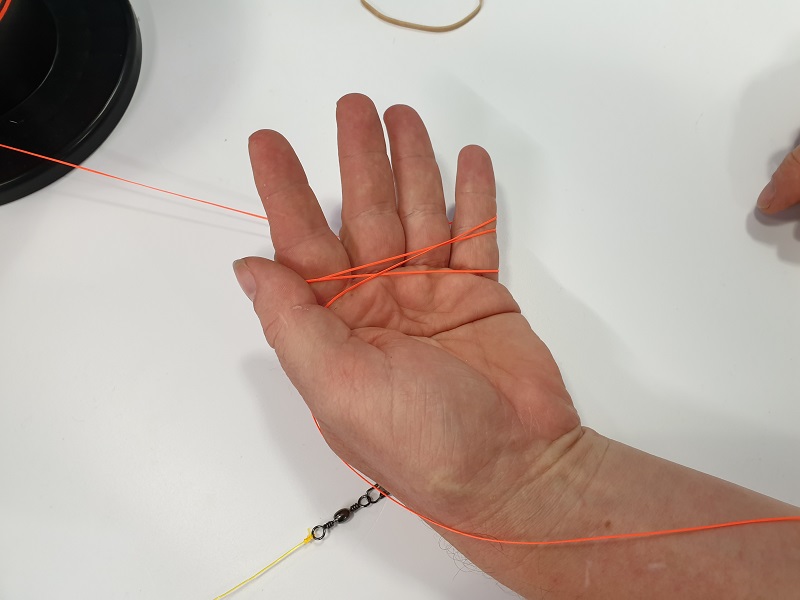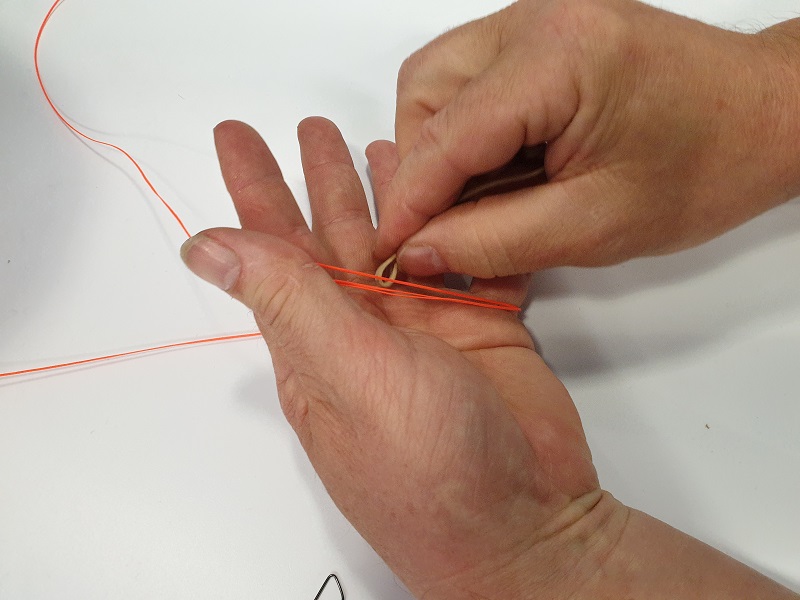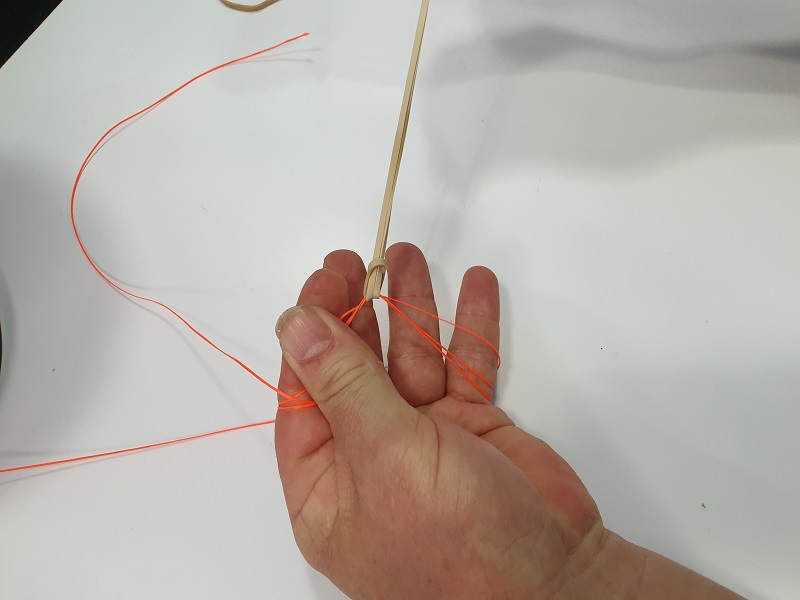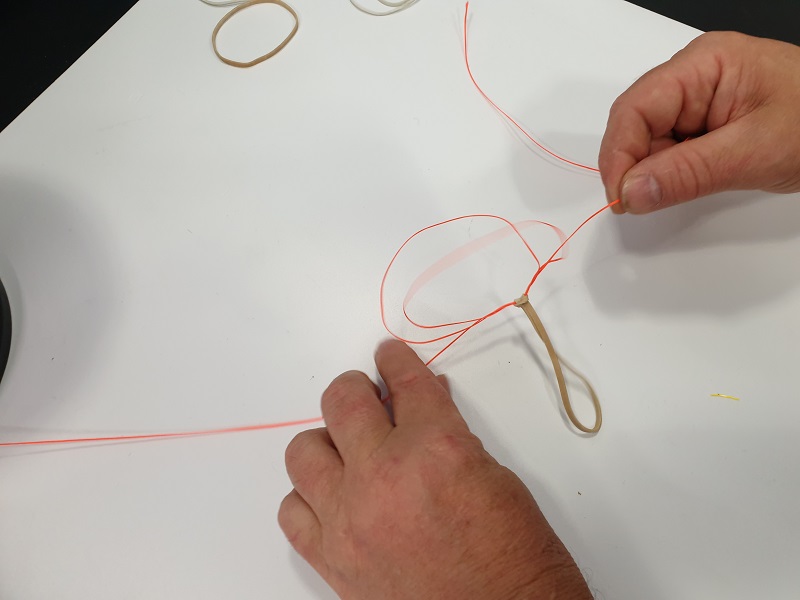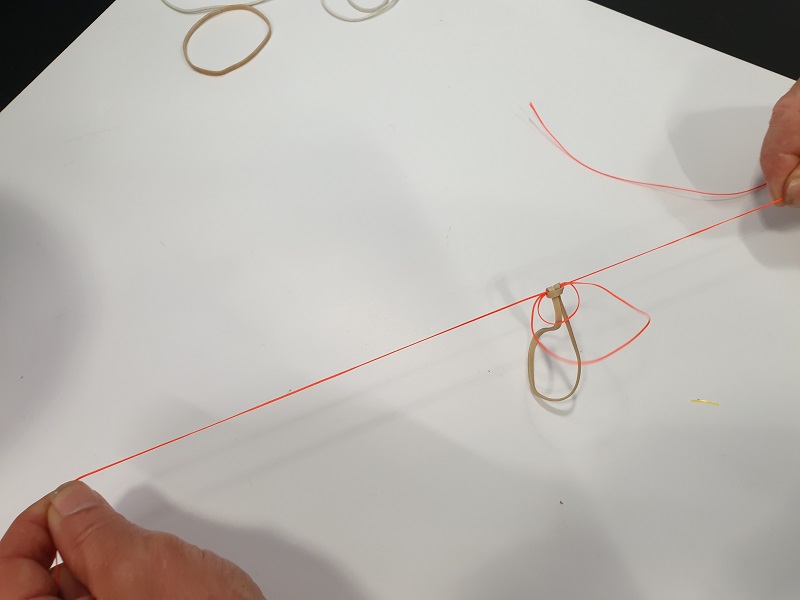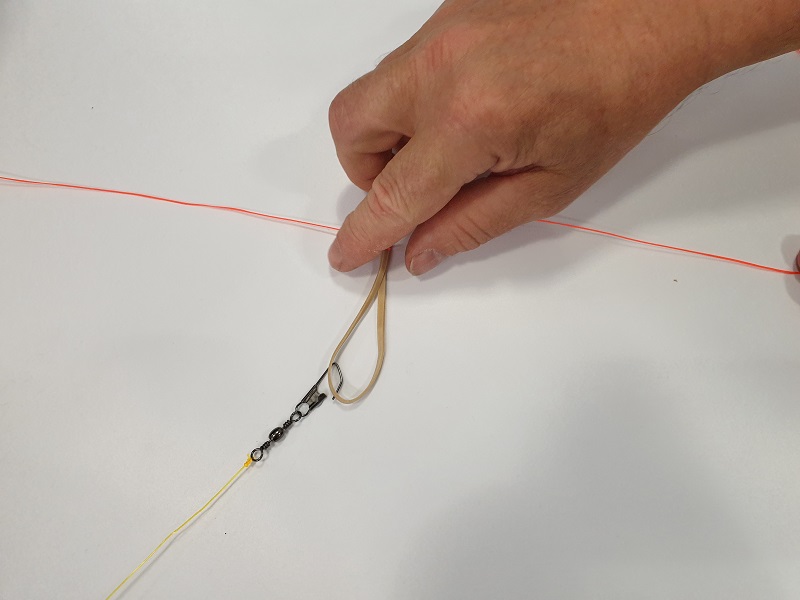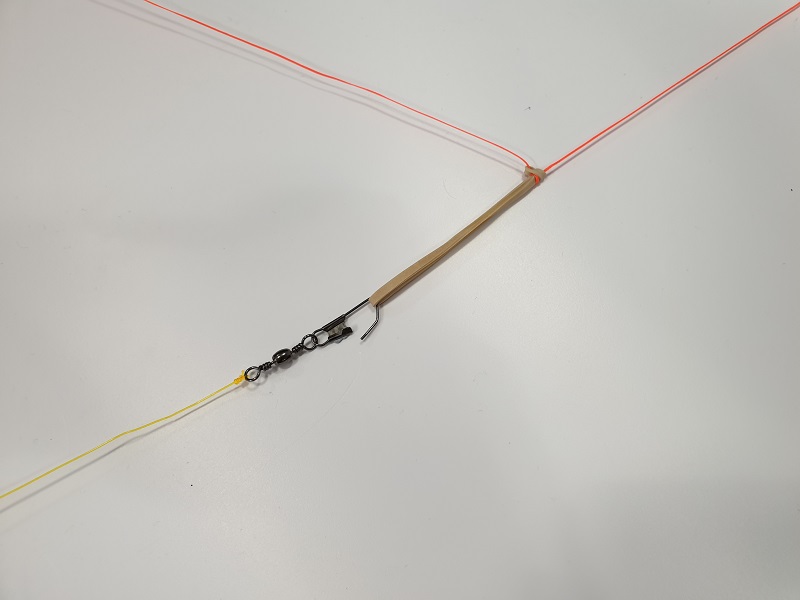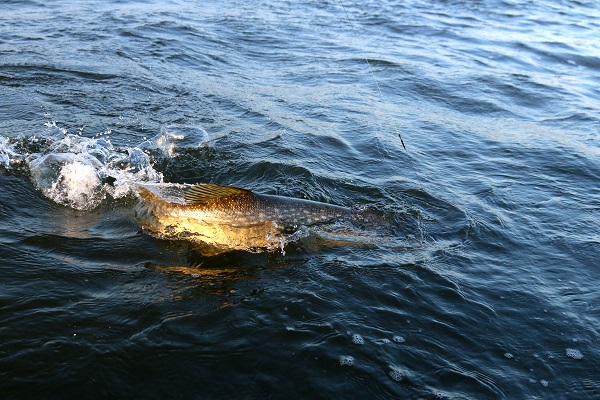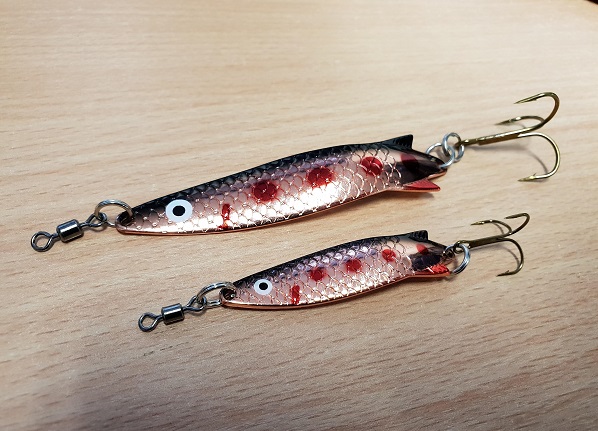A downrigger allows you to fish a lure or bait at a specific depth accurately behind a trolling boat. A downrigger contains a rod holder for storing your downrigger rod when it is actively fishing. The cannonball weight is deployed to the selected depth and allows the lure or bait to run at a specific depth.

Boom Arm
The boom arm is the arm that provides the extension required for the cannonball to safely be deployed from the back of the boat, without coming into contact with the rear/transom of the boat. The boom arm also allows you to set the downrigger at a specific angle when trolling. This is extremely handy if you’re using 2 or more downriggers or trolling rods at the one time as it allows you to equally space the rods out, minimising the chance of other trolling lines tangling.

Wire Cable
The wire cable is attached to the cannonball weight. The breaking strain of the cable is roughly around 150lb breaking strain. Some anglers do change the wire out for a braided line. This is due to the high pitch whine that can come from the wire cable when under tension during the troll. Other anglers think it’s a beneficial feature, and more experienced anglers, say the high pitch whine alters when a fish hits a lure or bait on the downrigger, giving them an audible bite indication.
Winch
The winch stores the wire cable on a spool and is used to pay out line to increase your fishing depth or reduce the amount of line out to run a bait or lure shallower. The winch is one of the most important aspects of the downrigger, as this will be used constantly throughout a day’s fishing, as you alter the lure or baits running depth to follow contours along the bottom.
The winch also contains a built-in clutch, this is to assist if you end up snagging the bottom with your cannonball weight and allows you time to kill the boat engine and stop any unwanted damage to your downrigger or boats transom. The clutch/brake allows you to gently stop your downrigger to your desired depth.
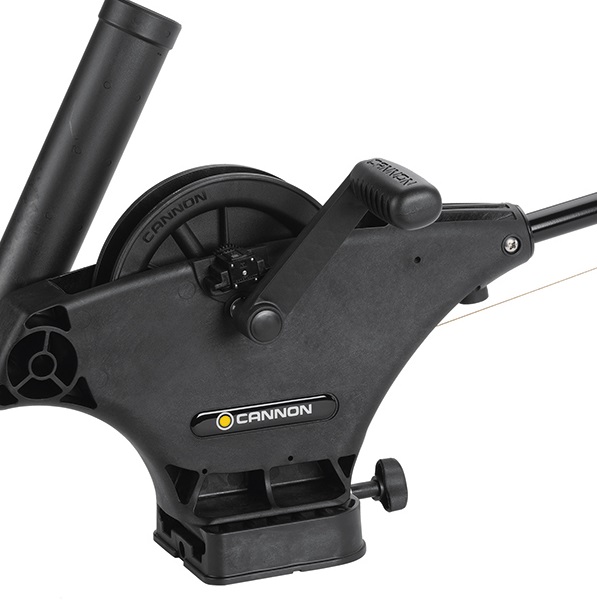
Cannonball (Weight)
The cannonball weight is the weight that helps take your lure or bait down to the desired fishing depth. These come in various sizes and weights from 5lbs all the way up to 15lbs. We recommend using a cannonball weight of about 8lbs as this more than enough for UK waters. If however, you were trolling waters with an extremely heavy flow or at extreme depths such as 60ft plus then a heavier cannonball would be recommended.

Release clip
The cannonball release clip is made up of a snaplink that attaches to the eyelet of the cannonball. This snaplink is attached to a length of crimped wire which is connected to a spring-tensioned clip that is designed to grip the line of the downrigger rod. Some of these clips come with various tension settings to allow you to set them up in a specific way. For example; if you are fishing a lure that creates a lot of drag or resistance, then you would want to increase the tension on the release clip so it does not release the lure prematurely.
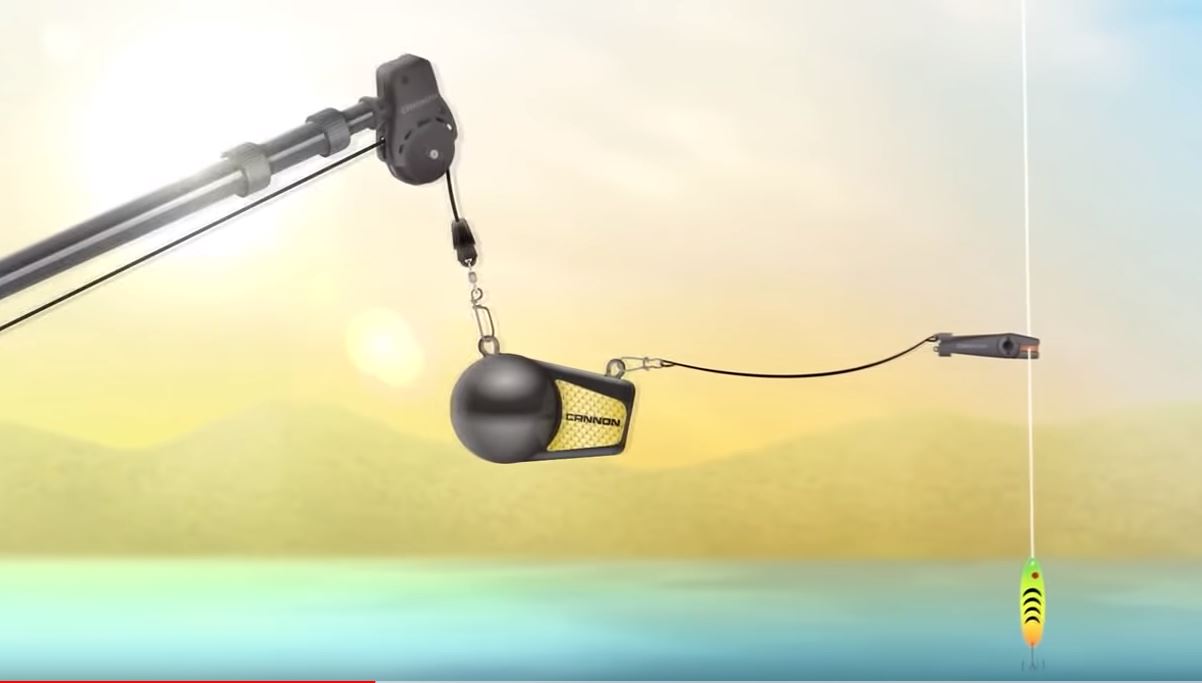
Release clips are a bit like marmite, some anglers don’t like them as there is too much of a guessing game involved with the tension setting on the release clip. In some instances, anglers have found that a release clip can be set to tight and not release when a smaller fish takes a lure or bait, thus resulting in them towing a small fish for miles without any sign of a fish being hooked. On the other hand, the release clip has been set to light and releases prematurely, resulting in wasted fishing time and frustration.
A reliable and more affordable option is to build your own release clips! This can be done by tying a 12-15inch length of 50lb mono to the front eyelet of the cannonball, then tying in a snaplink to the other end of the mono.
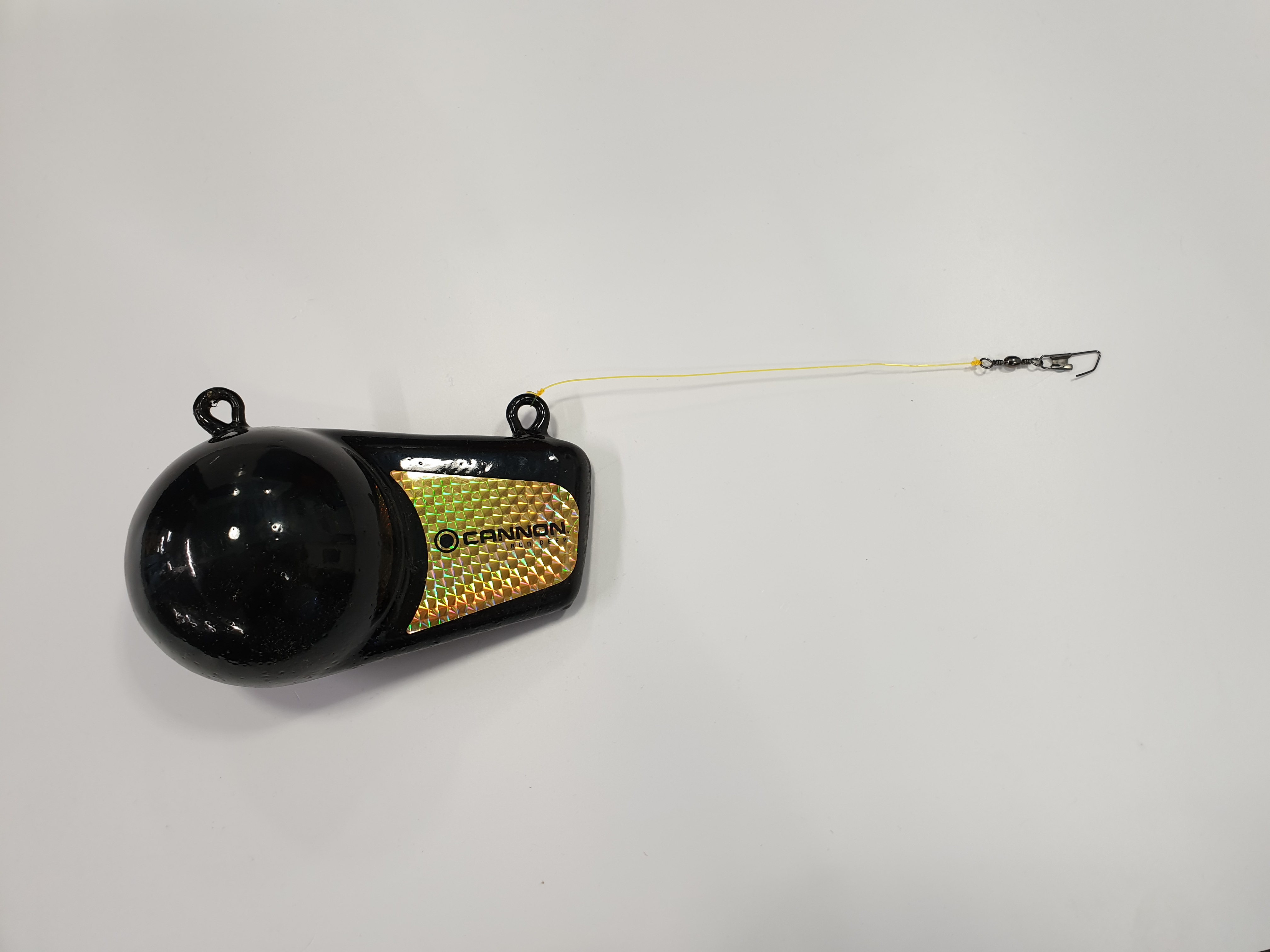
After this, pay out the amount of line that you want to have between the cannonball and lure. When you have your desired distance, loop the downrigger rod line around your hand twice, take a no. 16 elastic band and loop it around the two loops, thread one end of the band through the other end of the band so you lasso the two loops of mono, then tighten it down so it traps the mono. Then pull either end of the mono so you tighten down the two loops onto the elastic band.
Now clip the hoop of the elastic band onto the snaplink. The beauty of using an elastic band is that it eliminates the line slipping, so you can fish confidently knowing that your lure or bait is working as it should.
The rubber band not only stops any unwanted premature unclipping but it also provides better visual bite indication as the rod tip will physically change from its rhythmic pattern during the day. When you do get a fish, the rubber band will snap during the strike, allowing you to continue the fish without being hung up on the cannonball.
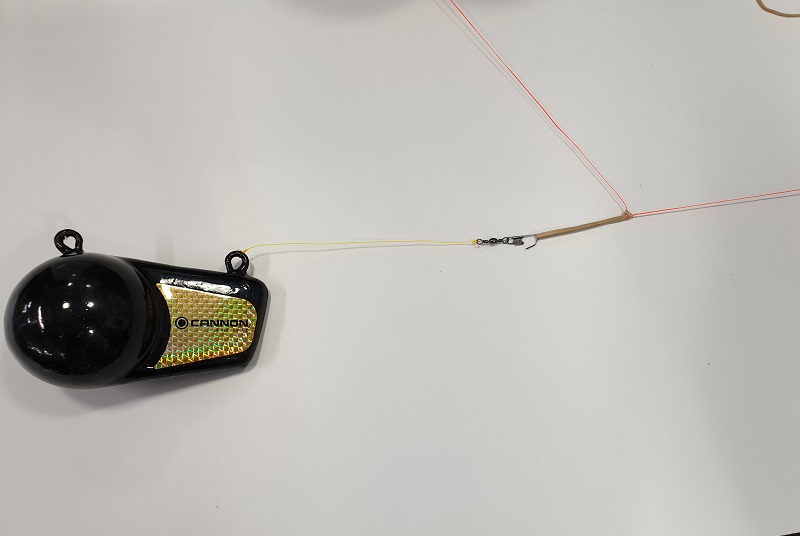
Selecting a downrigger
Before purchasing a downrigger, you really need to work out what you require from a downrigger and if it’s compatible with your boat.
Hire boats
If you’re predominantly fishing from a hire boat, then looking at a clamp-on downrigger is a better option. It will give you the ability to remove and move the downrigger in any position.
Boom length
The standard boom length is 24 inches or 2ft in length. Downriggers can come with boom arms of up to 5ft in length. However, these are not recommended for use on smaller boats that are used in the UK. In some instances, a longer boom arm can cause smaller boats to capsize if they become snagged on the bottom.
Downrigger booms also come in telescopic form, this comes in handy when transporting or storing your downrigger on or off your boat.
Installation
When installing a downrigger, you need to ensure you are attaching the downrigger to a very stable platform at the rear of the boat. Downriggers deal with heavy cannonball weights and resistance from trolling, so ensuring the downrigger is fixed to your boat properly will ensure your safety as well not losing your downrigger by it falling off.
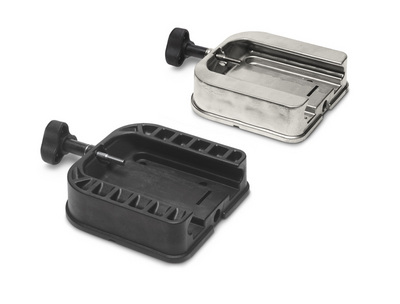
Tab Lok Base
There are various bases available for mounting downriggers. Lock bases, for example, allow you to remove the downrigger during transportation or storage. These bases are fixed units and limit you to a fixed angle the downrigger will sit at.

Swivel Base
Swivel mounts are another option worth considering. These mounts allow you to set the angle the line will be trolled from behind the boat. This is advantageous when using two rods or more. Swivel mounts also become handy when one of your two downrigger rods hooks up to a fish as you can push the downrigger booms away from each other to create more space to play fish and work around.
Mounting
There are various mounting systems for downriggers. Which one is right for you is down to the size and functionality of your boat.
Below we take a look at the various mounting systems that are available.
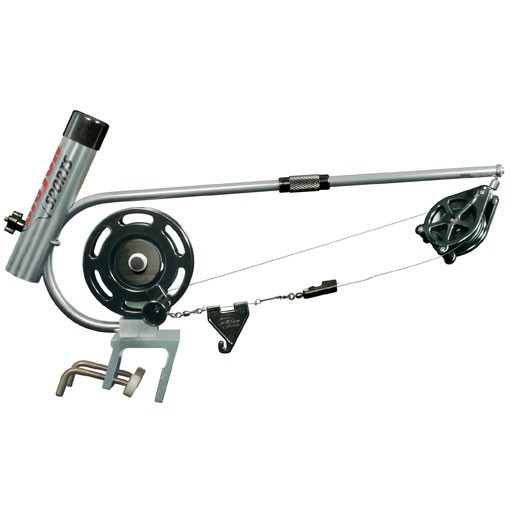
Clamps – Some downriggers feature clamps that tighten on the gunwale of your boat, these style of mounting systems are perfect for quick removal and for custom placement around your boat. Clamping systems are advantageous when used on hire boats.
Fixed mounts – These are the strongest options and perhaps the best choice for most boats. While they require drilling and permanent mounting, they’re the sturdiest and most secure way to attach a downrigger. We recommend using nyloc nuts. Ensure the downrigger bases sit flush to a solid mounted board/gunwales.
When to use a downrigger
The best time to use a downrigger is when you want to have absolute control over the running depth of your bait or lure. By using two downriggers in conjunction with one another, it allows you to cover two different depths thus allowing you to cover more water efficiently.
Electronic or Manual
Downriggers come in either manual or electric models. Manual downriggers are exactly what they say on the tin. Electric downriggers utilise an electric winch for bringing up the cannonball weight. Some electric models have channels that allow you to preset depths, making it easier to alter lure or bait running depths with a push of a button.
Electric downriggers are ideal for fishing extremely deep water! With some of Minn Kota’s industry-leading electric downriggers retrieving a staggering 250-feet-per-minute.
Electric
Pros:
- • Very easy to use when fishing alone
- • Fast
- • Some high end electric downriggers have programmable depth presets
Cons:
- • More expensive
- • More maintenance required
- • More draw on your marine leisure batteries
Manual
Pros:
- • Easy to maintain
- • Relatively inexpensive
Cons:
- • Can be labouring to use especially when fishing deep
- • Slower to use
Lures Or Bait
There are no set rules. You can fish lures or bait from a downrigger. It comes down to personal preference. Some anglers use lures as they like the ability to use differing actions and various colours.
Bait anglers like a more natural presentation and think using a bait gives fish more confidence to strike a bait time and time again without being put off. Whereas a lure sporting a hardwood or plastic body might only get hit once by a fish and the unnatural feeling might deter the fish from hitting the lure again.
How Far Behind the Cannonball to Set Lure/Bait?
One of the most frequently asked questions we receive is how far behind the cannonball should I set my lure or bait? The answer is, how long is a piece of string?
Putting that aside, our recommendation is to run a lure or bait 10 to 12 feet behind the cannonball. The advantages of running a bait or lure this close to the cannonball are as follows:
Easier to control
If your lure or bait is running closer to the cannon, it makes it easier to control the lure or bait when following contours. A longer length of line will create a delay in the movement of bait or lure and can end up becoming snagged on the bottom.
The shorter length gives you time to move your lure/bait out of harm’s way when trolling. Some anglers believe the cannonball can actually attract fish, their inquisitive nature can bring fish up to investigate.
Visual I.D.
The shorter length of line can allow you to view your cannonball and lure on your fishfinder, this provides you a visual indication of how the lure or bait is acting in the water and ensures that the lure/bait is running at your desired depth.
Downrigger Top Tips:
Use a Fishfinder
We cannot highlight this enough. It is very important to use a fishfinder in conjunction with a downrigger. You have to be aware of the depths that you’re trolling over and the hazards that may be present under the water! In a worst-case scenario, you could lose a downrigger as it breaks away from your boat causing destruction or even capsizing your boat.
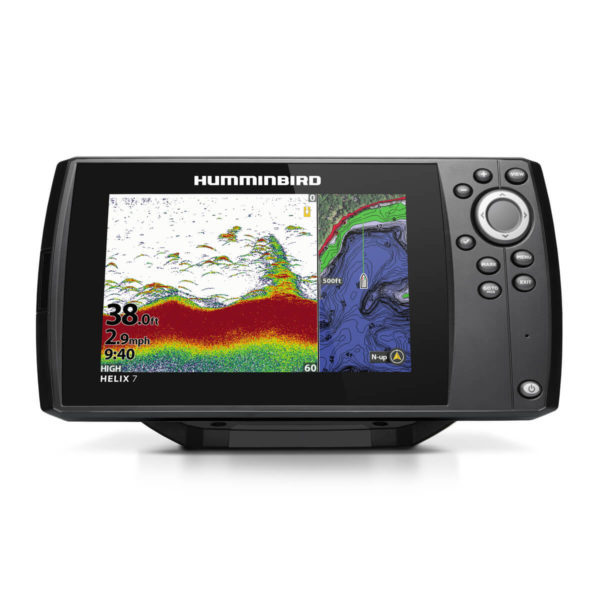
Check baits or lures frequently
Most modern fish finders will allow you to track the cannonball on the screen and in some instances even your bait or lure depending how far back you set the lure or bait from the cannonball.
Scandinavian Tackle Easy Catch Downrigger EC-100
from £119.99from £124.99Cannon Low Profile Swivel Base
from £127.99Cannon Tab Lock Base
from £45.99Cannon Easi-Troll ST/E Manual Metric Downrigger
from £309.99Cannon Terminator
from £9.99Cannon Retro Ease Weight Retriever
from £23.99

